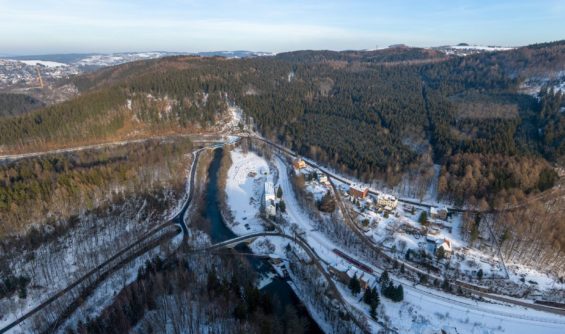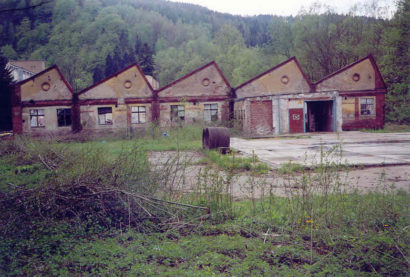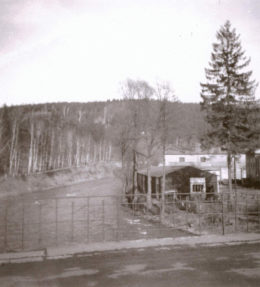Wilischthal Subcamp
October 30, 1944 – April 13, 1945
![]()
Aerial view of the former factory grounds in Wilischthal, 2019 (Flossenbürg Concentration Camp Memorial / Photo: Rainer Viertlböck)
![]()
Former factory buildings in Wilischthal, 2005 (Photo: Flossenbürg Concentration Camp Memorial). The factory halls are now demolished.
![]()
-
Prisoners
30 Jewish women, of whom 134 are Polish, 72 from Hungary, 39 Italian, 20 Belgian, 11 each Czech and French, along with German, Dutch, and Slovakian women.
-
Forced labor and quarters
The women worked in a disused textile factory at a smelting furnace and assembled component parts of submachine guns for the Deutsche Kühl- und Kraftmaschinen GmbH. The women were housed close to the factory in a large wooden barrack with barred windows.
-
Guards
Head overseer Helene Klofik with 15 female overseers and four older men as guards. Klofik was hostile to the prisoners and frequently beat them.
-
Death toll
One death. The women died because the head overseer refused the carrying out of an appendectomy.
-
Disbanding of the camp / end of the war
On April 13, 1945, the women from the subcamps Wilischthal and Zschopau were sent on a week long odyssey in cattle wagons to Theresienstadt. They remained in Theresienstadt until the liberation by Soviet Troops in the beginning of May.
-
Commemoration
On May 8, 2005, on the occasion of the sixtieth anniversary of the end of the war, a memorial stone for the victims of the subcamps Zschopau and Wilischthal was unveiled at the Zschopau Cemetery. On the memorial stone, the names of the women who died in these subcamps are engraved.


